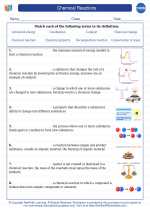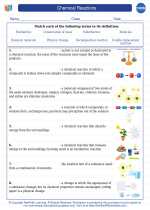Habitat
A habitat is the natural environment in which an organism lives and thrives. It encompasses the physical and biological factors that make up the living space of an organism.
Components of a Habitat
There are several key components of a habitat:
- Abiotic factors: These are non-living physical and chemical elements of the environment, such as temperature, water, sunlight, soil, and air quality.
- Biotic factors: These are living components of the habitat, including other organisms that the species interacts with, such as predators, prey, competitors, and symbiotic partners.
- Food sources: Habitats provide various food sources for the organisms living within them, which are essential for their survival and growth.
- Shelter: Habitats offer shelters or refuges that protect organisms from predators, extreme weather, and other environmental challenges.
- Reproductive areas: Habitats provide suitable locations for organisms to reproduce and raise their offspring.
Types of Habitats
Habitats can be classified into various types based on their characteristics and the organisms that inhabit them:
- Terrestrial habitats: These habitats exist on land and include forests, grasslands, deserts, tundras, and more.
- Aquatic habitats: These habitats are found in water bodies, such as oceans, rivers, lakes, and wetlands.
- Marine habitats: Specifically refer to habitats within the oceans and seas, including coral reefs, kelp forests, and the open ocean.
- Freshwater habitats: These habitats are found in freshwater bodies like rivers, lakes, and ponds.
Adaptations to Habitats
Organisms have specific adaptations that allow them to survive and thrive in their respective habitats. These adaptations can be structural, behavioral, or physiological, and they help the organisms meet the challenges of their environment.
Human Impact on Habitats
Human activities, such as deforestation, urbanization, pollution, and climate change, have a significant impact on natural habitats, often leading to habitat destruction and loss of biodiversity.
Conservation of Habitats
Conservation efforts aim to protect and preserve natural habitats, ensuring the survival of diverse species and maintaining ecological balance. This includes creating protected areas, implementing sustainable resource management, and raising awareness about the importance of habitats.
Conclusion
Understanding habitats is crucial for comprehending the interconnectedness of life on Earth and the delicate balance of ecosystems. By studying habitats, we can appreciate the diversity of life forms and work towards preserving these essential environments for future generations.
[Habitat] Related Worksheets and Study Guides:
.◂Chemistry Worksheets and Study Guides High School. Chemical Reactions

 Worksheet/Answer key
Worksheet/Answer key
 Worksheet/Answer key
Worksheet/Answer key
 Worksheet/Answer key
Worksheet/Answer key
 Worksheet/Answer key
Worksheet/Answer key
 Worksheet/Answer key
Worksheet/Answer key
 Vocabulary/Answer key
Vocabulary/Answer key
 Vocabulary/Answer key
Vocabulary/Answer key
 Vocabulary/Answer key
Vocabulary/Answer key
